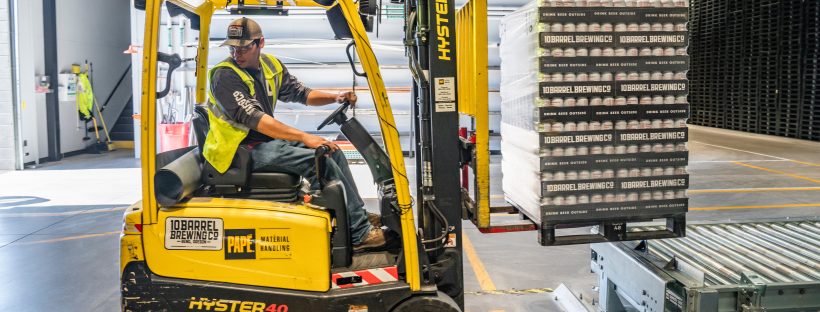Warehouse efficiency can save your business a lot of time and money. Running a smooth operation for picking products and deliveries will make sure you hold onto a good reputation with your customers and don’t lose money on delayed, lost, or wrong orders. Warehouses can also be dangerous places, thanks to heavy products, forklift trucks driving around, and packing materials left lying around. A more efficient warehouse is easier to run in a safer way too, so you’ll have happier staff to go with those happier customers.
- Layout your warehouse in a smart way. A sensible floorplan will be useful for your staff to allow them to complete their tasks quicker, so they can get more things done. Use all the space in the warehouse, including making use of the height, to avoid having to expand your warehouse space. Make sure you have clearly marked areas for storage, sorting, shipping, and products. Label each area and all your product shelves so staff can find what they’re looking for easily. Mark out smarter picking routes to reduce trips around the warehouse. Keep bestsellers in easy to access areas near the front of the warehouse, and keep stock of slower sellers at lower levels so they don’t take up as much room.
- Make sure you’re using a delivery service that you can rely on. Customers need to get their orders quickly if they’re going to trust you. Choose a company with good reviews, that has good policies regarding lost, damaged, or delayed orders. Offer delivery that is fast, reliable, and arrives in good condition.
- Keep your warehouse tidy to avoid common accidents like falling over packing materials. Provide the staff with tools to keep things tidy like bins, brooms, and mops. Ask staff to be responsible for their own work areas, and have warehouse supervisors check that things are kept clean and safe.
- If any areas of your warehouse are dark, make sure you fit enough lighting. Low light and poor visibility can lead to accidents, so light your warehouse properly. Brighter lights can also help staff to feel more alert while they’re working.
- Hold regular inspections, or ask your warehouse managers to regularly inspect. Check that everything is being run properly, safely, and tidily. Remind staff of how the warehouse should operate by displaying posters to remind them about safety equipment, walkways, and the importance of keeping the floor clear.
- Check local regulations for operating heavy machinery, like driving a forklift or running an electric pallet truck. Set up walkways around the warehouse and tell all staff to wear hi-vis jackets to make sure that staff on foot are safe from the forklifts. Check regulations for the safe handling of any materials like cleaning chemicals that you use and make sure staff are correctly trained.
- As soon as new stock comes into the warehouse, get it checked for damage, correct quantities, or any mispicks. Once it’s been checked, put it away promptly to get the warehouse floor cleared and ready for more deliveries. This also reduces the risk of items being left lying around where they can then be easily misplaced. Stock that has been checked in is also less likely to be stolen, so you could drastically reduce product loss.
- Don’t keep multiple kinds of products in the same area. This makes it easier to avoid mistakes when picking orders. Make sure all your products are easy to locate and are in clearly marked spots. You could also offer incentives for pickers to encourage faster, more accurate work.
- Use two or three standard boxes to pack orders into to reduce staff having to hunt for the right box to pack an order. Integrate your warehouse system with some packing software. This software can accurately produce a packing list, invoice, and a shipping label, which helps to ensure the right products make it out of your warehouse to the correct person.
- Be sensible with how you fill your shelves. Heavy items should be kept on lower shelves, with lighter items higher up. This reduces the risk of accidents when staff are trying to lift down heavy items of stock. It’s also faster if they aren’t struggling to safely get a heavy item down from a high shelf, so you’ll be saving time too.
A properly run warehouse can help you to increase profits, improve staff safety, and reduce the costs of things like lost stock, wrong deliveries, and unhappy customers. Improve your warehouse to improve your business.
